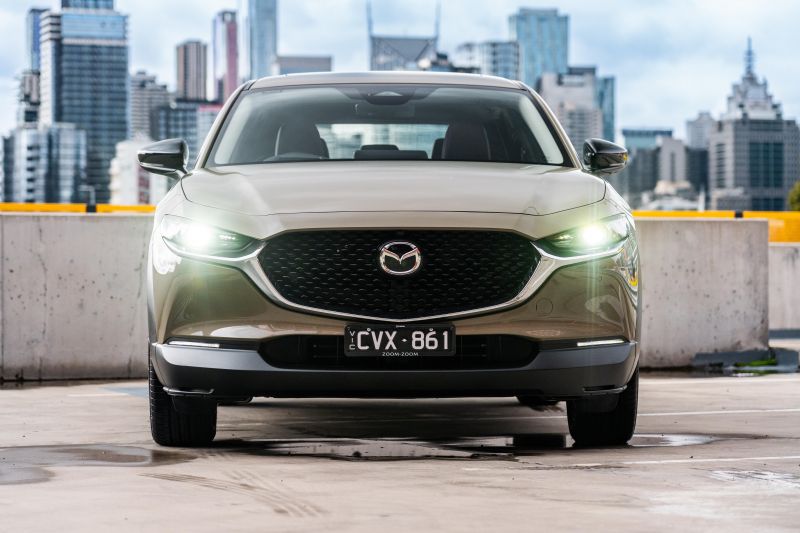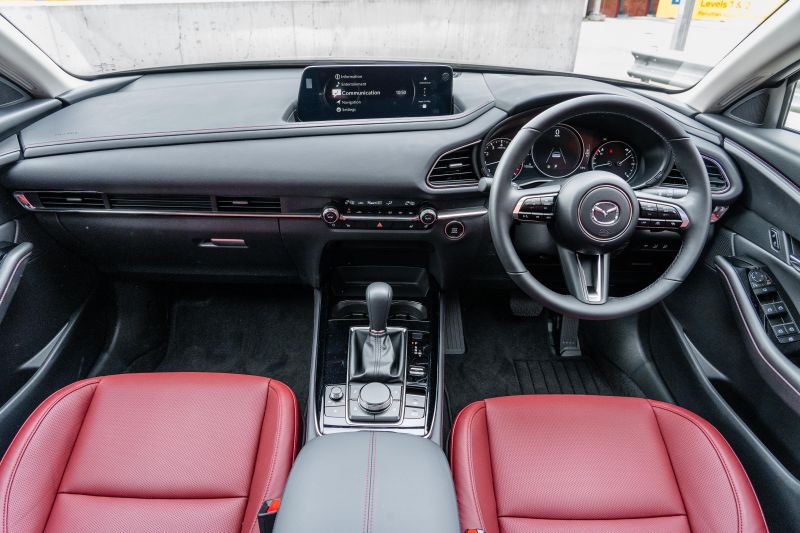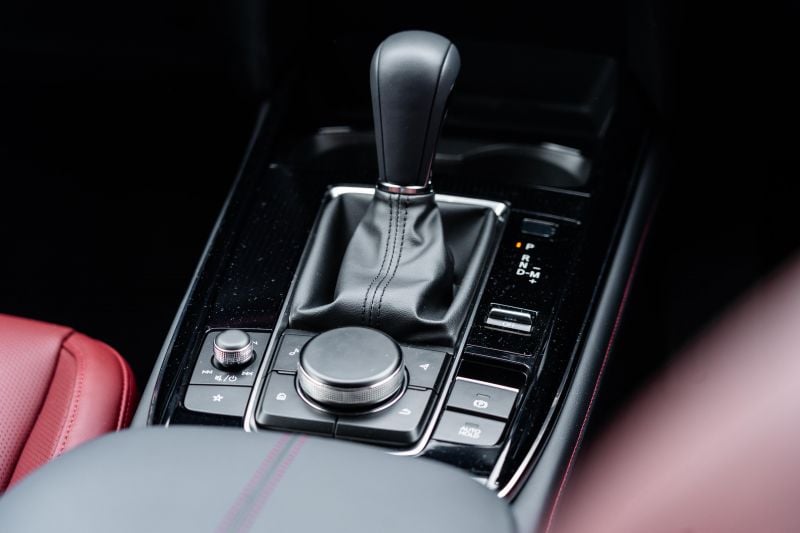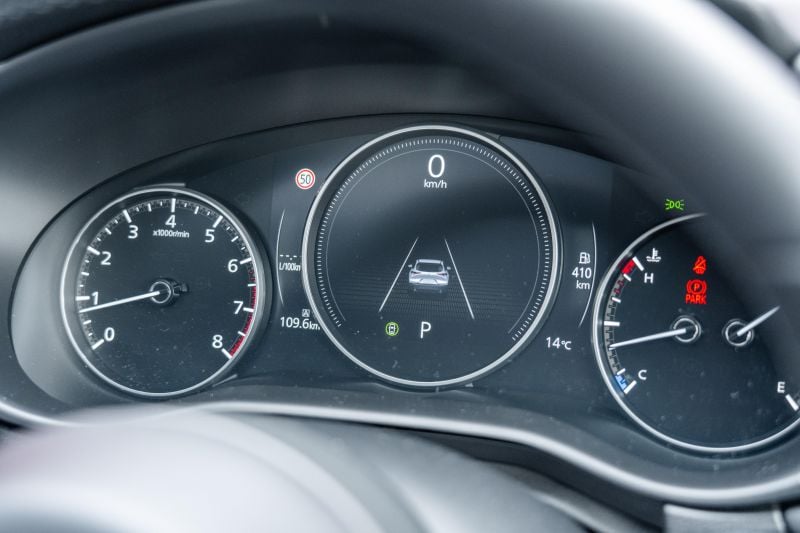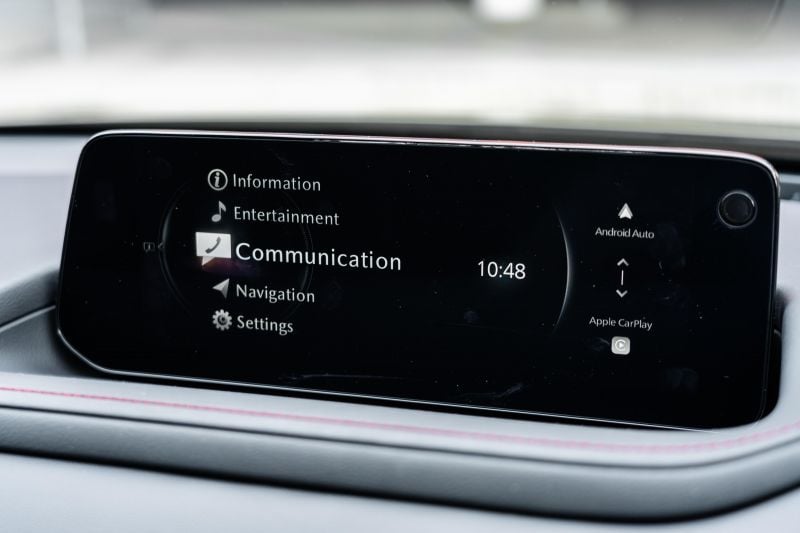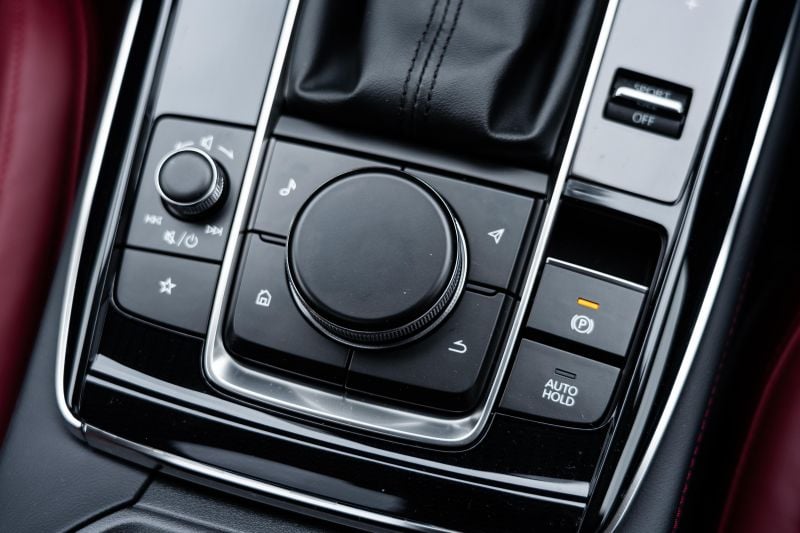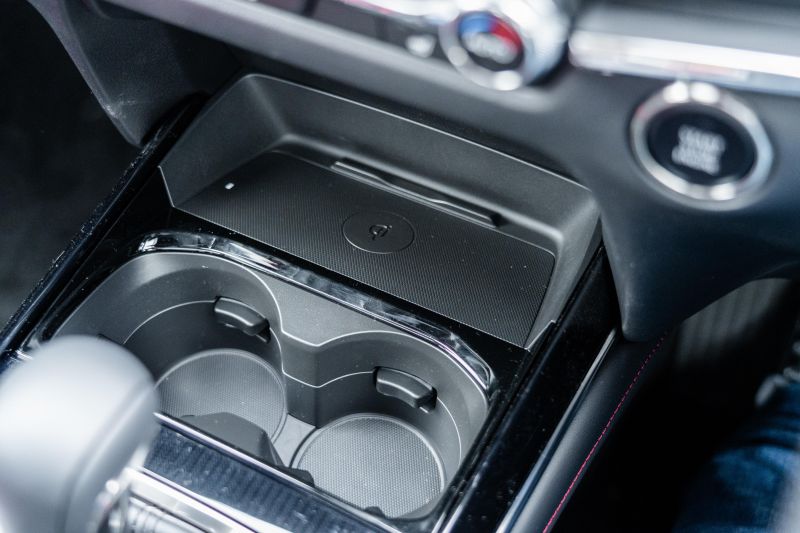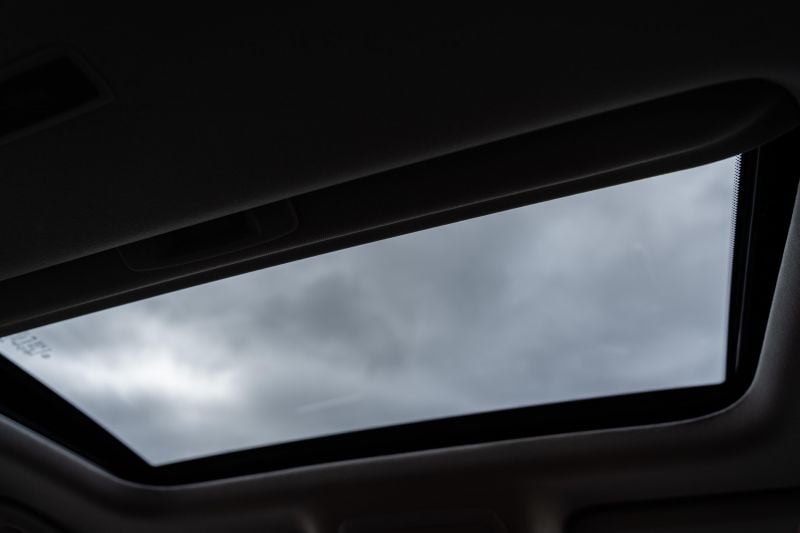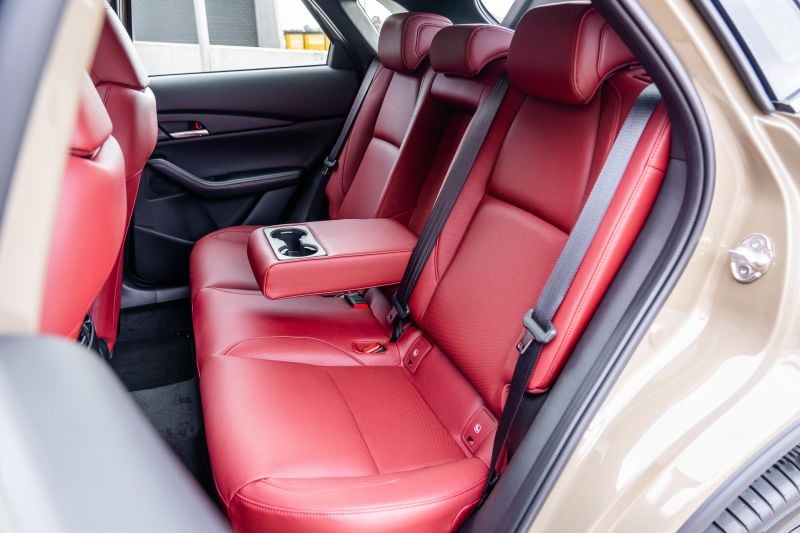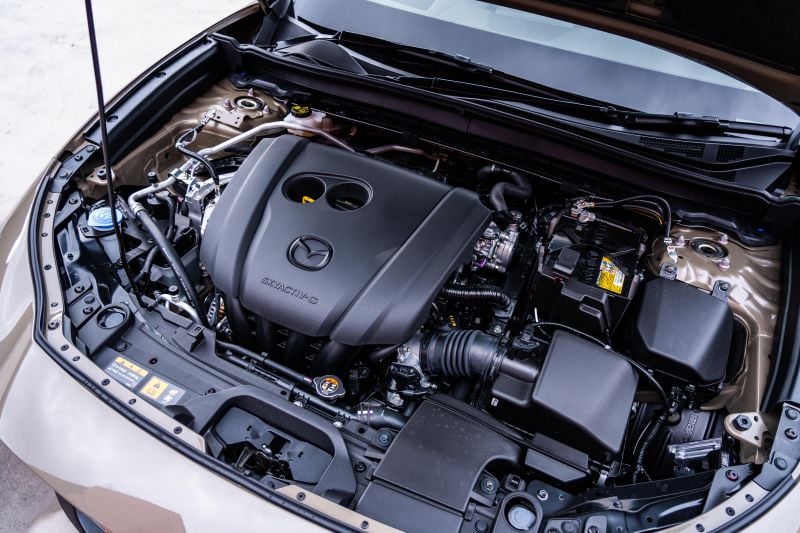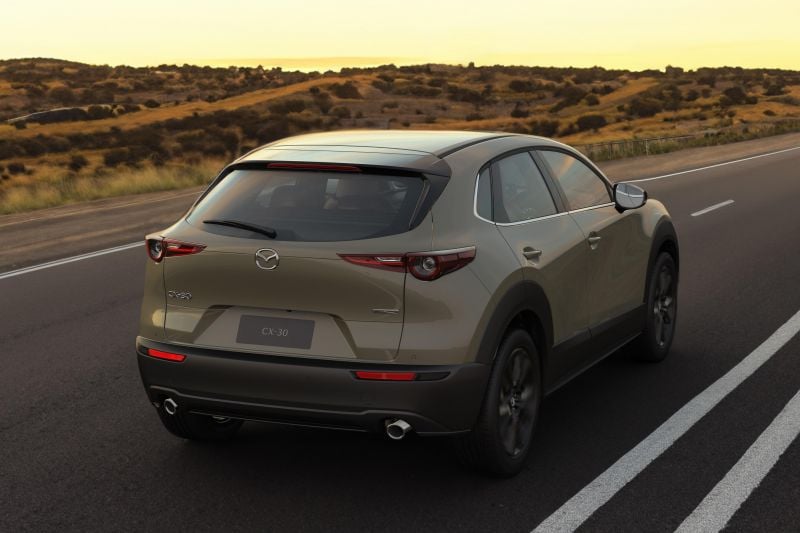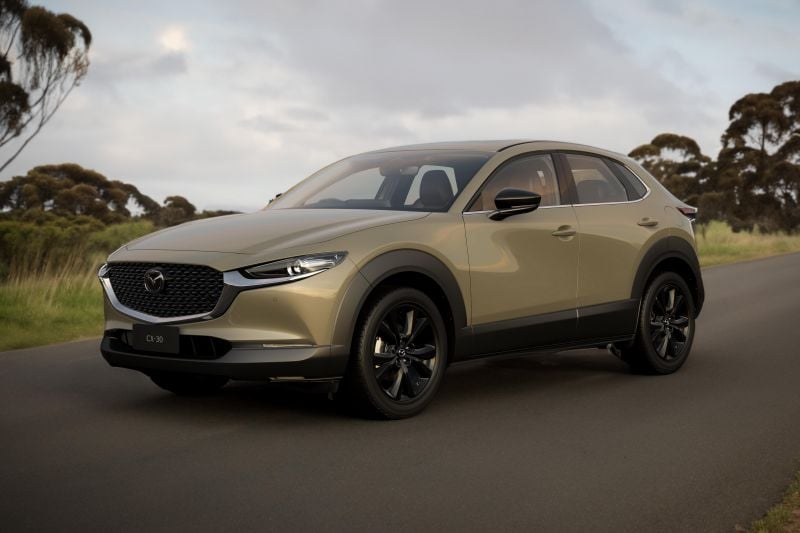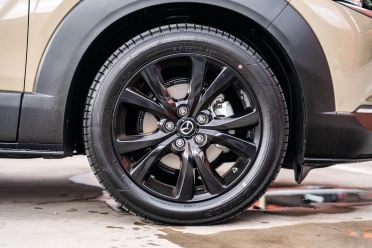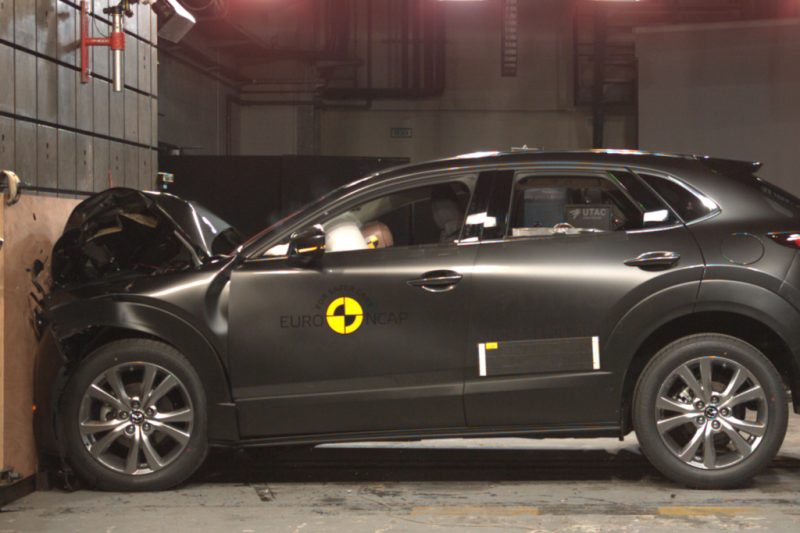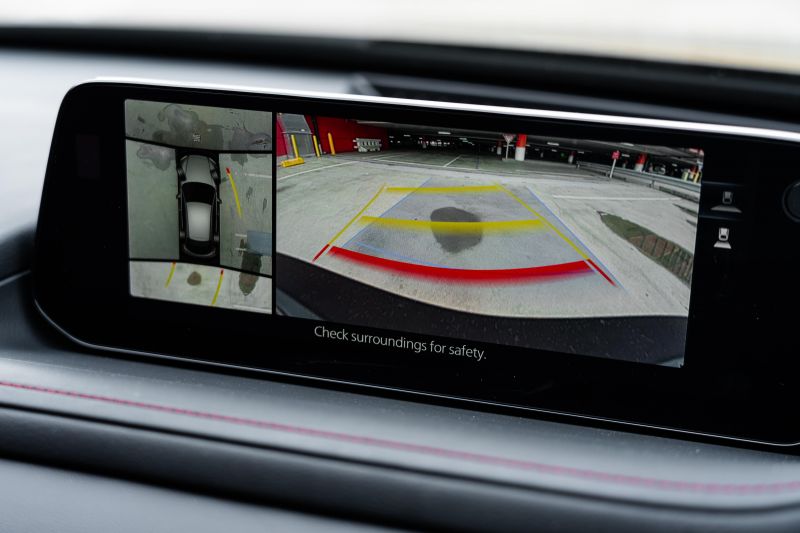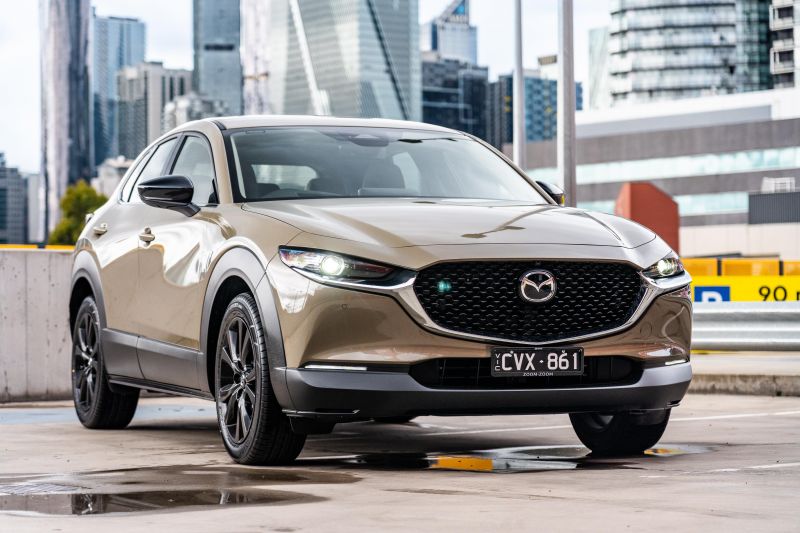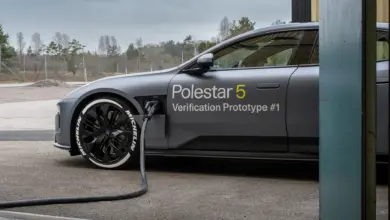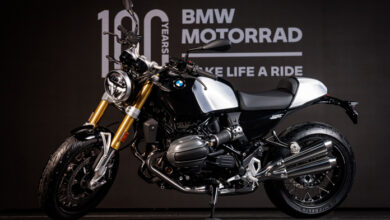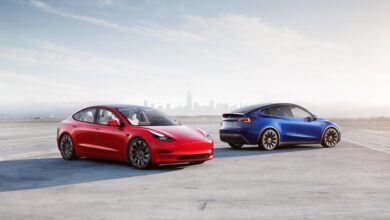2024 Mazda CX-30 G25 GT SP review
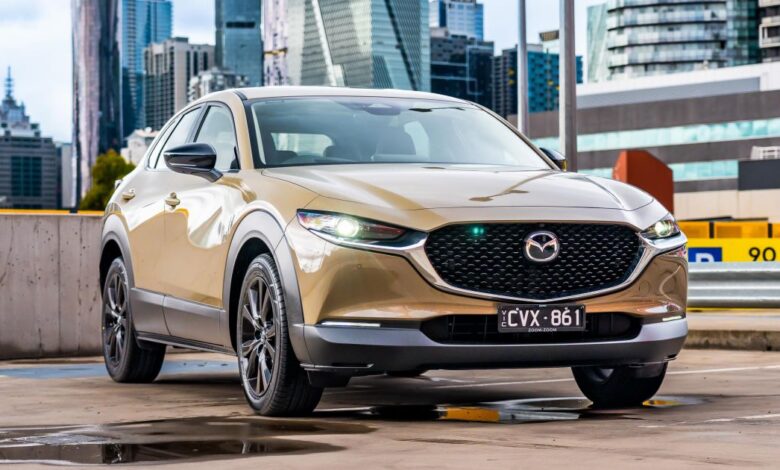
It’s hard to stand out if you’re selling a small SUV in Australia, but Mazda has managed with the CX-30 since its debut in 2020.
There were already plenty of variants to choose from, but this year Mazda has trimmed the fat while also introducing a new member to the family – the GT SP.
Available in front- and all-wheel drive, the GT SP replaces the outgoing Touring SP and is a victim of price rises that have hit the whole CX-30 range.
With a drive-away price tag well past $40,000, is the new Mazda CX-30 GT SP a shrewd buy amongst such stiff competition?
How does the Mazda CX-30 compare?
View a detailed breakdown of the Mazda CX-30 against similarly sized vehicles.

Mazda
CX-30
How much does the Mazda CX-30 cost?
The 2024 Mazda CX-30 range starts at $33,140 before on-road costs and tops out at $47,540 plus on-roads for the G25 Astina with all-wheel drive.
Five model grades are available, and they are split across two engine options.
2024 Mazda CX-30 pricing:
CX-30 G20
- 2024 Mazda CX-30 G20 Pure: $33,140
- 2024 Mazda CX-30 G20 Evolve: $34,840
- 2024 Mazda CX-30 G20 Touring: $38,840
- 2024 Mazda CX-30 G20 Astina: $44,040
CX-30 G25
- 2024 Mazda CX-30 G25 Touring: $40,340
- 2024 Mazda CX-30 G25 GT SP: $42,340
- 2024 Mazda CX-30 G25 GT SP AWD: $44,340
- 2024 Mazda CX-30 G25 Astina: $45,540
- 2024 Mazda CX-30 G25 Astina AWD: $47,540
Prices are before on-road costs
The test vehicle featured here is a G25 GT SP in front-wheel drive guise, optioned with Zircon Sand Metallic exterior paint ($595), the Vision Technology pack ($1300), and floor mats ($225).
That brings the total list price to $44,460 before on-road costs, or $49,221 drive-away for Victorian buyers.
To see how the Mazda CX-30 compares with its rivals, use our comparison tool.
What is the Mazda CX-30 like on the inside?
Mazda may not be considered a premium brand in the car world, but the interior of the CX-30 appears to have been carefully constructed to challenge that long-held view.
Immediately your attention is drawn to the striking burgundy leather seats, which look great and add a splash of colour to an otherwise dark cabin.
From that first visual impression, the experience remains positive once you slide into the driver’s seat. Aside from looking the part, the chairs are plush, well bolstered for daily driving, and have plenty of electric adjustment for drivers of all shapes and sizes.
It’s starting to get chilly here in Melbourne as winter approaches, but any discomfort doesn’t last long in this variant thanks to its three-stage heated front seats as standard.
The configurability of the seat heaters is certainly preferable to the on/off switch fitted to other cars in this ballpark, and is in line with far more expensive SUVs.
Looking around the rest of the cabin, Mazda’s attention to detail becomes even more apparent.
You’ll find mostly thin layers of soft-touch materials coating surfaces above the waistline, including the dashboard. We’re not talking top-grade Nappa leather here, but all the common contact points are pleasing to the touch.
There’s no step down in quality from the front seats to the rear, either, which is a common cost-cutting ploy.
The thin leather-trimmed steering wheel feels natural in the hands, as does the gear lever.
My main gripe is that the transmission tunnel receives the gloss black plastic treatment. Sure, it looks great when new, but the stuff is a magnet for scratches.
The inside of the Mazda CX-30 GT SP isn’t just about style, there’s plenty of substance too.
None of the interior pieces have any play in them; everything is solid and seemingly built to a high standard. All the buttons and switches have a satisfying tactility, especially in 2024 when manufacturers are increasingly turning to screens and haptic controls.
Six years on the market can date a car, but in this case it gives the CX-30 some advantages over the competition.
Considering this is essentially a jacked up Mazda 3, storage space is also commendable.
Door bins up front fit a 1L water bottle in addition to other bits and bobs, the items cleverly separated into tiers.
Cups and bottles are still best stored in the dedicated centre cupholders, which are stationed at the front of the transmission tunnel and possess the diameter to fit a 1L bottle.
However, the slots are too close to the dash controls, so a large bottle blocks access to important functions such as the seat heater button and climate controls.
You shouldn’t have to choose between storing a drink and having access to regularly used features.
Further back, a cavernous, carpet-lined storage area is located under the centre armrest. If only it was easy to access.
Opening the armrest involves a convoluted sliding and folding process which is fiddly and difficult to complete while driving. The lid itself also feels flimsy – I was worried about breaking it during every use.
Once in reach, the armrest area is a very usable space. A plastic divider can be used to separate items, and there are two USB-C and one 12V connection points built in.
Glovebox room is on par with other cars of this size, and there is a sunglasses holder located above the driver.
With roots dating back to 2019, the CX-30 is a taste of old-school cool in many respects, but that doesn’t mean we’re dealing with CD players and single DIN stereos.
Ahead of the driver is a 7.0-inch digital cluster flanked by analogue dials that tell you everything you need to know without reinventing the wheel.
It’s a simple layout that some will perceive as basic, but I think it’s perfectly uncluttered and informative.
For those worried about copping speeding tickets in the mail, the posted limit is indicated by a handy red mark on the speedometer, as well as speed sign graphics located both on the digital cluster and heads-up display. The simple HUD also displays speed.
To the left sits a 10.25-inch infotainment system which is only equipped to GT SP and Astina variants of the CX-30 as standard, lower variants feature a smaller display, though you can opt for the larger one as part of the Vision Technology package.
For its clarity and competitive size, the screen is positioned way too far from the driver. This is a big deal, because it prevents you from utilising the touch capability of the system, forcing use of a rotary dial on the transmission tunnel.
While mostly easy to use, the dial has its limits. Accessing apps is made infuriating when you have to scroll all the way through a long list (e.g. Spotify playlists) to reach them. It’s also painstaking to enter destinations in the satellite navigation, which requires endless twisting and toggling. At least the maps are detailed.
Once you’ve mastered use of the rotary dial, the infotainment system is relatively easy to navigate and contains all the features you need.
Everything is configurable, from the digital displays to safety tech and entertainment settings.
Adjusting the climate controls is also a doddle. Physical buttons and dials make it easy to change settings on the go, without having to negotiate a maze of menus.
The GT SP has wireless smartphone mirroring capability which is not available in base models. In my experience, Apple CarPlay works smoothly and reliably.
The same cannot be said for the wireless phone charger. It was temperamental, and my phone had to be in exactly the right position for it to charge. When the rubber-topped pad was working, charging was quick and my phone never threatened to launch itself at anyone in the cabin.
Back in the second row of seats, there aren’t nearly as many toys or creature comforts.
Space is at a premium; I am six-two with long legs and couldn’t get comfortable behind the driver.
My knees also touch the back of the passenger seat, but I could just about get comfortable on that side, and there’s plenty of toe room. The back seats neither slide nor recline.
Headroom also leaves plenty to be desired. My head constantly grazed the dark headlining, adding to a sense of claustrophobia that’s only remedied by the vibrant seats and front sunroof.
Mazda does offer the larger CX-5 if you’re carting a family around, but it’s worth considering rivals such as the Kia Seltos offer more usable space in the back.
The aforementioned sunroof is a quality addition to the GT SP, injecting light and fresh air into the cabin.
While tech is in strong supply up front, you won’t find any USB ports in the back. A couple of air vents is all you get.
There’s adequate storage space, including map pockets in the seat backs, an armrest with fixed cup holders, and door bins big enough for a 1L drink bottle or your favourite book.
You’ll need to put those nooks to good use, as the boot is on the smaller side at 317L.
The small stature of the CX-30 makes it easy to load and unload items, but lifting the manual tailgate reveals a cargo area that’s plain minus a small light, and compromised by a low roofline.
If you want to unlock some more space, the rear seats allegedly fold 60/40. However, with the front seats set too far back the back seats can’t fold, instead you need to move the seats forward before dropping the second row. It’s not the end of the world, but it’s an extra step in a process that should be simple.
There are top tether points for the three rear seats, and ISOFIX points on the two outboard rear seats.
What’s under the bonnet?
The Mazda CX-30 GT SP is powered by a 2.5-litre naturally aspirated four-cylinder petrol engine producing 139kW of power and 252Nm of torque.
Power is sent to the front wheels only in this configuration, although an all-wheel drive version is available.
| Model | Mazda CX-30 GT SP |
|---|---|
| Engine | 2.5-litre four-cylinder |
| Power | 139kW |
| Torque | 252Nm |
| Transmission | 6-speed automatic |
| Driven wheels | Front-wheel drive |
| Kerb weight | 1477kg |
| Fuel economy (claimed) | 6.6L/100km |
| Fuel economy (as tested) | 9.5L/100km |
| Fuel tank capacity | 51L |
| Fuel requirement | 91 RON |
| Emissions (CO2) | 154g/km |
Our fuel economy figure was measured over 350km of mostly peak-hour traffic commuting, with some short stints on the open road.
To see how the Mazda CX-30 compares with its rivals, use our comparison tool.
How does the Mazda CX-30 drive?
The nostalgia evoked by interior features in the CX-30 can also be felt in the driving experience, which is involving despite underlying flaws.
Modern drivers are used to turbochargers with instant shove, but the naturally aspirated four-cylinder in the GT SP requires some patience at low revs.
Max torque (252Nm) isn’t available until 4000rpm, so you really have to wring out the motor to make meaningful progress. Overtakes on the freeway can be a chore for that reason.
More throttle means more noise, and the buzz produced by this 2.5-litre can quickly become onerous if the driver prefers a quiet, insulated journey.
Having said that, the engine is only noticeable when you’re in a hurry and tyre roar is mostly absent.
When pottering around at low revs the CX-30 is quiet enough and when required the engine pulls in a linear fashion, while the automatic transmission was buttery smooth in stop-start traffic, unlike some dual-clutch systems offered in this segment.
I quite enjoyed the driving experience of this small SUV.
What CX-30 lacks in performance it makes up for with approachability. If you’re hopping out of an old car it’ll feel very normal, and the GT SP is still quick enough in regular driving. The 2.5-litre engine doesn’t work nearly as hard as the 2.0-litre in lesser models.
The CX-30 also manages to combine desirable driving characteristics of both big and small cars. It rides comfortably over potholes and bumps like a larger SUV, but feels as nimble as the Mazda 3 it’s based on.
It lands on the sporty side of the spectrum, but enough effort has gone into making this comfortable that you’re not punished for picking a car that handles well on the daily commute.
Mazda has also managed to incorporate some weight and feel into the steering, which is confidence inspiring on twisty roads.
Efforts to keep the CX-30 sleek and compact do have a detrimental effect on visibility though. Thankfully with the Vision Technology pack, you have the assistance of surround-view cameras, front parking sensors, and front cross-traffic alerts.
That makes the CX-30 easy to park and manoeuvre in tight spaces such as a shopping centre carpark, a place cars like this frequent.
Other driver aids such as adaptive cruise control and lane-keep assist are well-calibrated and never border on intrusive, which made the GT SP a pleasure to navigate through peak-hour Melbourne traffic.
Having said that, the blind-spot monitor became a source of annoyance every now and then, with its regular beeps and notifications.
What do you get?
The GT SP sits towards the top of the lineup, below only the Astina. Take a look at what each variant offers below.
G20 Pure highlights:
- 16-inch grey alloy wheels
- Space-saver spare wheel
- Automatic LED headlights
- Automatic high-beam
- Rain-sensing wipers
- Automatic power-folding side mirrors
- 7.0-inch digital instrument cluster
- 8.8-inch infotainment system
- Head-up display
- Wired Apple CarPlay and Android Auto
- Satellite navigation
- DAB+ digital radio
- Eight-speaker sound system
- Push-button start
- Leather-wrapped shifter
- Leather-wrapped steering wheel
- Fabric upholstery
Evolve adds:
- 18-inch silver alloy wheels
- Paddle shifters
- Dual-zone climate control
- Overhead sunglass storage
- Rear fold-down centre armrest
Touring adds:
- Front parking sensors
- Auto-dimming driver’s side mirror
- Reverse tilt-down driver’s side mirror
- Side mirror memory
- Wireless Apple CarPlay and Android Auto (NEW)
- Wireless phone charger (NEW)
- Keyless entry
- Illuminated front vanity mirrors
- Black leather upholstery
- 10-way power driver’s seat
- Two-position driver’s seat memory
GT SP adds:
- 18-inch black alloy wheels
- Power tilt and slide glass sunroof
- Gloss black grille
- Gloss black side mirrors
- 10.25-inch infotainment system
- Heated steering wheel
- Heated front seats
- Burgundy leather upholstery
Is the Mazda CX-30 safe?
The Mazda CX-30 received a five-star ANCAP safety rating back in 2019.
It scored 99 per cent for adult occupant protection, 88 per cent for child occupant protection, 80 per cent for vulnerable road user protection, and 76 per cent for safety assist.
All 2024 Mazda CX-30 variants come standard with the following safety equipment:
- Autonomous emergency braking (AEB)
- Pedestrian detection
- Cyclist detection
- Rear AEB
- Blind-spot monitoring
- Rear cross-traffic alert
- Lane-keep assist
- Lane departure warning
- Driver attention alert
- Traffic sign recognition
- Rear parking sensors
- Reversing camera
- Tyre pressure monitoring
The G20 and G25 Touring add:
The G20 and G25 Astina also receive:
- Front cross-traffic alert
- Cruising & Traffic Support
- Driver monitoring system
- Surround-view monitor
The optional Vision Technology package ($2000, G20 Pure; $2000, G20 Evolve; $1800, G20 and G25 Touring; $1300, G20 and G25 GT SP) adds:
- Front cross-traffic alert
- Cruising & Traffic Support
- Driver monitoring system
- Surround-view monitor
- Front parking sensors (G20 Pure and G20 Evolve only)
- 10.25-inch infotainment system (G20 Pure, G20 Evolve, G20 Touring, G25 Touring)
How much does the Mazda CX-30 cost to run?
The CX-30 is backed by a five-year, unlimited-kilometre warranty in line with the wider Mazda range.
Mazda recently increased its servicing intervals of petrol-powered models to 12 months or 15,000km (up from 10,000km), and offers seven years or 105,000km of capped-price servicing.
Mazda CX-30 GT SP estimated service pricing:
- CX-30 GT SP FWD: $352, $552, $427, $552, $352, $626, $352
CarExpert’s Take on the Mazda CX-30
The small SUV segment is absolutely saturated with options, and yet this variant of the CX-30 manages to carve itself out a niche.
We challenge you to find a competitor that drives this well, with the interior polish and attractive packaging.
The GT SP is a worthwhile upgrade over the Touring model; $2000 is a bargain for features including an upgraded infotainment system, sunroof, burgundy heated seats, and a heated steering wheel, to name a few.
In our eyes, it’s also great value when compared to the flagship Astina which commands a $3000 premium for an upgraded sound system, adaptive headlights and a power tailgate.
Does that make the GT SP the pick of the range? Of the G25 models certainly, and if you’re spending any time on the highway it’s the G25 we’d recommend over the under-gunned G20.
Some of the CX-30’s flaws can’t be fixed with red seats and black wheels, however. It’s small by class standards in the rear, and it’s a shame the sporty suspension and steering aren’t backed by a turbocharged engine in Australia.
Click an image to view the full gallery
MORE: Buy a Mazda CX-30
MORE: Everything Mazda CX-30

